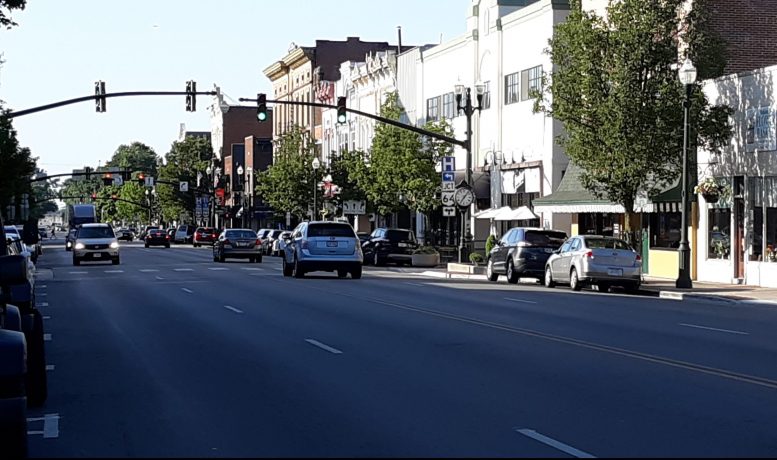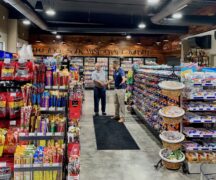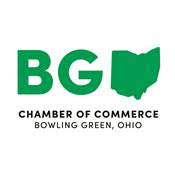By JAN LARSON McLAUGHLIN
BG Independent News
It’s still not business as usual in Bowling Green. Employers still can’t fill shifts. Businesses are still open fewer hours. City and chamber officials are still searching for ways to help businesses bounce back.
“We want to know how to drive the recovery of business in the Bowling Green area,” BG Chamber of Commerce Director Mary Hinkelman said as she started off a panel discussion Thursday evening on COVID’s lasting impact locally.
“It’s not business as usual for any of us at this time,” she said, asking for comments from local business people – “so we know what is holding recovery back for BG businesses.”
Finding workers
Even before COVID, many employers in this area had difficulty filling positions. Those problems haven’t gone away.
“They’ve been exasperated by the effects of the pandemic,” Hinkelman said.
Some have blamed the weekly $300 unemployment checks as the culprit keeping some people home. But two county economic development and job officials questioned that rationale.
“I don’t know if that is really what the issue is,” said Mary DeWitt, director of Ohio Means Jobs in Wood County.
Very few workers are turning down work to collect the $300 federal benefit, said Wood County Economic Development Director Wade Gottschalk.
And if employers are expecting a surge of job applicants when the checks end soon, they may be disappointed, Gottschalk said.
The bigger issues getting in the way of matching employees with employers are child care, transportation and lack of flexibility in the workplace, DeWitt said.
Gottschalk said he recently called around to local daycare providers to find out how much it would cost for full-time care of a toddler. The costs ranged from $10,000 to $12,000 a year – and that’s just for one child, he said.
“Think about how much you have to pay people to go to work” so they can afford childcare, Gottschalk said. “That has a dramatic impact on people’s ability to enter the workforce.”
Affordable housing is also an issue, since it can help attract and retain employees – or send them away looking for homes they can afford.
During COVID, many families reverted to one-income families out of necessity. That trend may stick.
“People have realized they can get by on one income,” Gottschalk said.
Also many workers opted for early retirement during the pandemic. They likely aren’t coming back either.
“Those are issues we’re going to have to address,” he said.

Unconventional efforts
A survey of Bowling Green business by the chamber in January showed that the top concern of employers was the welfare of their employees.
“We found that so astounding when that came through on the results,” Hinkelman said.
To keep employees healthy, the Wood County Health Department is conducting vaccination clinics at businesses.
“We just want to make vaccinations as available as we can in the community,” Wood County Health Commissioner Ben Robison said. Clinics have been held at workplaces, and “we’re happy to duplicate that” at other locations, he said.
In addition to health, quality of life issues have become part of the conversation at many businesses, said Kati Thompson, director of Bowling Green Economic Development.
Businesses are offering incentives like microshifts and more flexibility.
“We are focusing on how to attract and retain employees,” Thompson said.
Mojabeng Kamala, coordinator of the Welcome BG program, said unconventional solutions are needed to help fill job openings. Her office is working to educate businesses on the international labor available here in Bowling Green.
“We cannot propose the same old solutions,” Kamala said.
One of those unconventional ideas is the Ohio Means Jobs program linking high school juniors and seniors with job openings, DeWitt said.
How to best use federal funds
The city of Bowling Green is in line to get an estimated $7.3 million in American Rescue Plan money.
Mayor Mike Aspacher said the city is still waiting for more instructions on exactly how the funding can be used. The city has already received a 151-page document on the program.
“This is an historic opportunity for us to invest in the community,” Aspacher said.
Among the mayor’s ideas of possible uses for the funds are:
- Neighborhood development and community assistance on projects like paving or water and sewer work.
- Expanded housing grant programs.
- Livability projects, like a multi-use path from the high school to the community center, sidewalk replacements, and an ADA playground.
- Public restroom for the downtown area.
- More electric charging stations downtown.
- Improvements to the police station.
- Infrastructure improvements to business parks in the city.
- Relocation of city facilities at the corner of East Wooster and Thurstin Avenue.
- Upgrades to EMS and fire vehicles.
Aspacher said the city is still waiting to see what type of projects qualify for the funding.
“We’re open to ideas,” he said.
Hinkelman asked if there might be a way to use some of the funding to install electric charging stations at local hotels. She explained that people with electric vehicles plot out their journeys based on locations where they can charge their vehicles while they stop for lunch or stay overnight.
Efforts already underway
Those on the panel talked about programs already in place to help businesses get through the pandemic.
Downtown Bowling Green Director Tony Vetter talked about the “think local campaign,” encouraging people to shop, dine and explore the city. He also talked about the new parklets, the DORA, and live concert series downtown for the summer.
“It’s all about bringing more foot traffic to downtown Bowling Green,” Vetter said.
Thompson talked about her office’s focus on manufacturers in the city.
“We met with our local industries to figure out what their needs are,” she said.
The economic development office and city government also offered a revolving loan fund to help infuse cash into local businesses, Thompson said.
Gottschalk talked about working with the county commissioners to offer small business grants using the federal COVID funds.
He noted how past efforts to diversify the local economy paid off during the pandemic.
“When everybody else was shutting down with COVID, the distribution centers were hiring like crazy,” he said, listing off the local Amazon, Home Depot and Walgreen facilities.
Aspacher said the city considered its essential responsibility to keep the municipal utilities and safety services functioning. The city made it through with no interruption of services, he said.
“We’re still standing. But there’s still work to do,” the mayor said. “I’ve been extremely impressed with the resiliency of this community.”
Municipal Administrator Lori Tretter talked about the changes city government adopted to allow businesses to operate under COVID health restrictions. Businesses were allowed to set up temporary parking for carryouts, to establish outdoor dining, and to put up temporary signage – with no fees charged for permits.
“We listened to our businesses,” Tretter said. “We are eager to hear from businesses.”
“We’ll continue to look for ways to help businesses in Bowling Green in any way we can,” said City Council member Greg Robinette.
And the chamber reached out to help all local businesses, not just chamber members, Hinkelman said.
“I’ve never been so grateful for the pool of resources available to us,” she said.
Downtown parklets coming soon
One downtown business owner, Gayle Walterbach, asked why the parklets are taking so long to be installed downtown.
Vetter said the project is actually on course, and should be in place later this month or early July. The first three will be installed in front of Grounds for Thought, Kabob It, and Juniper.
Walterbach said that Bowling Green was falling behind other communities in promoting their downtown areas and activities.
“They’re ready to come out. They are ready for some fun,” she said of local residents.
Many downtown businesses still have shorter hours than they did before COVID. Mark Cassin, of State Bank, said customers get frustrated when they go to a business during normal hours only to find it’s not open.
Thompson suggested that maybe the shops could collectively stay open later in the evenings when events are held downtown.
Both Thompson and Walterbach – two of the founders of the Firefly Nights events held downtown prior to COVID – agreed that the popular events will return in the future.




